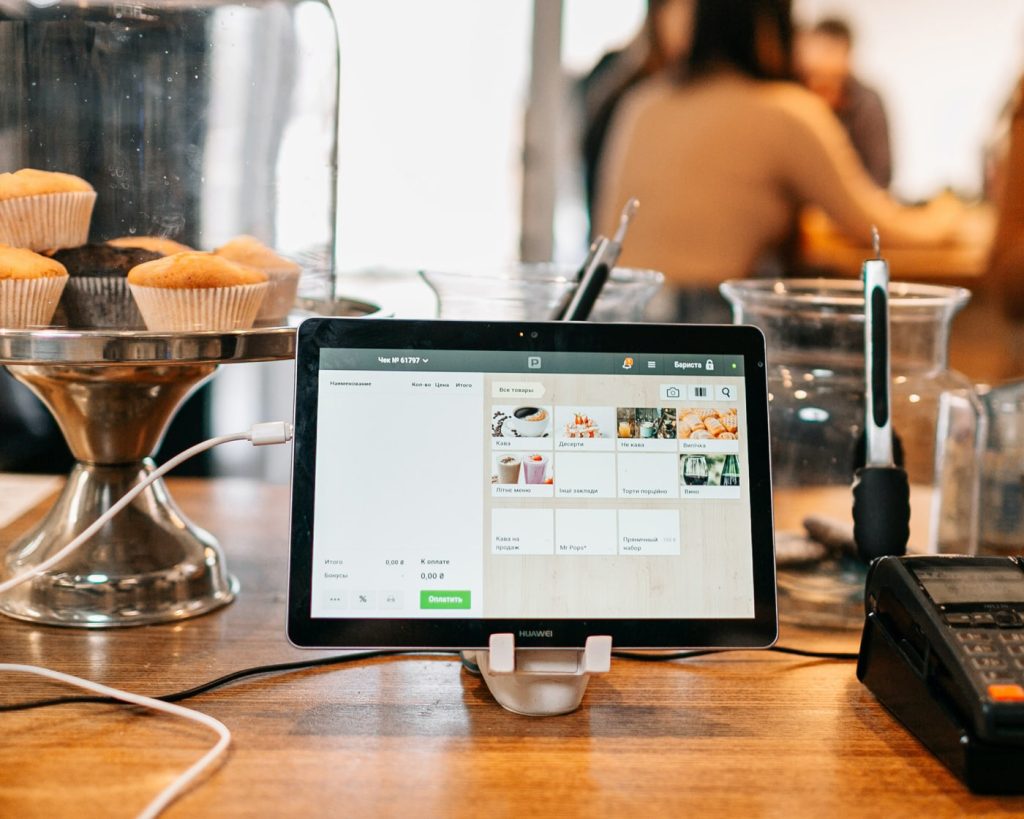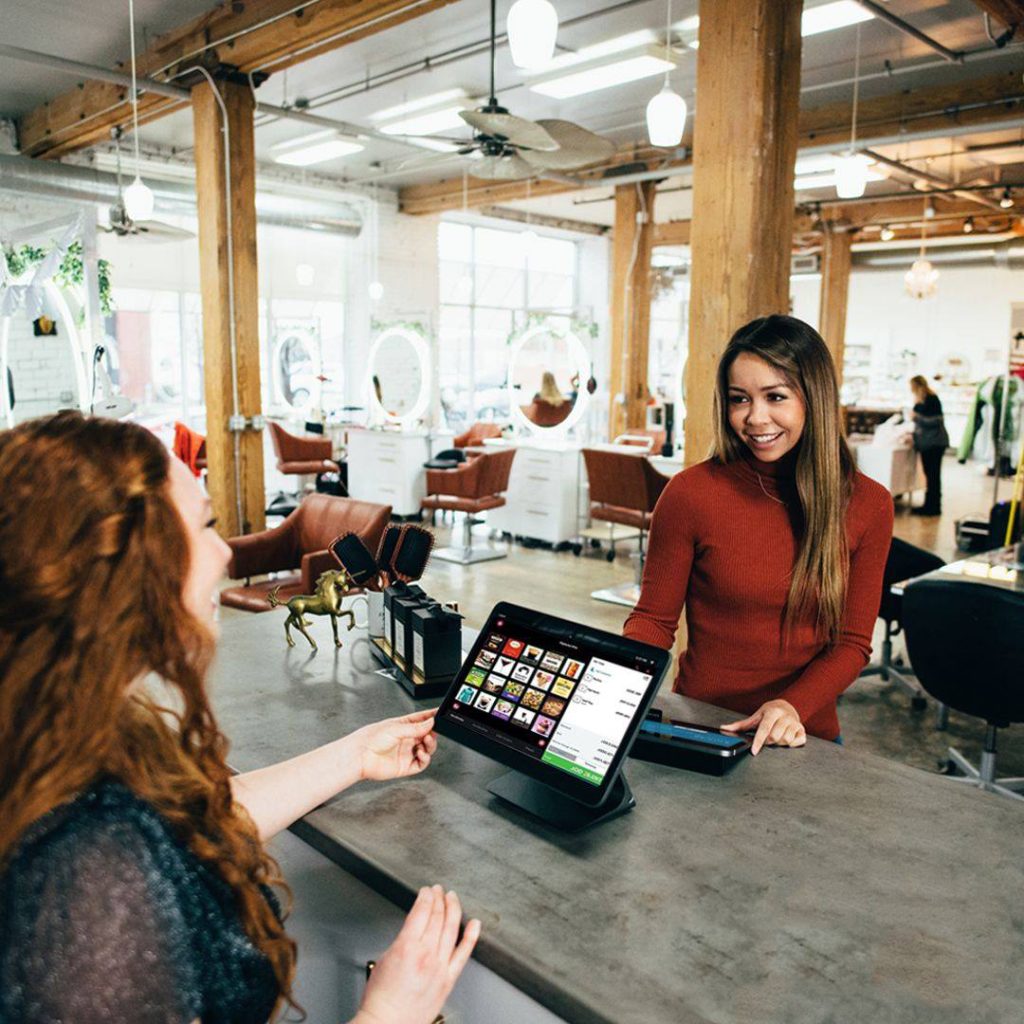Point-of-sale (POS) systems are advancing, providing businesses with greater flexibility, control and intelligence than ever before. Businesses have moved from traditional cash registers and stationary credit card readers to iPads and even mobile- or cloud-based POS systems. This shift in technology will not only provide businesses with additional features, but also allow businesses to keep all reports and transactions in one place.
Breadcrumb, a restaurant cloud-based POS system by Upserve, allows users to split checks, quickly search items on the menu, track server performance, process online and tableside orders, report trends of voiding or comping items for guests, track what menu items are selling well, and even train new employees.
Square allows businesses to transform iPads and smartphones into a POS system using their Square readers and stands. Its first fully integrated system, Square Register, gives you the ability to “track sales in real time, manage inventory, build a customer directory and have customers pay intuitively.”
These are just a few of the many ways POS systems have moved beyond simply processing sales and are becoming an integrated part of the entire business operations ecosystem. To illustrate, here are five ways POS systems are changing and how your business can jump on the cutting edge of POS technologies. [Compare quotes: Best POS systems]
1. Shared commerce
By taking its operations online, a business has the potential to grow exponentially. Previously, businesses would first have to run data from their e-commerce platforms, then from their physical POS systems. For a comprehensive report, the business would then have to import both results into spreadsheet, accounting or other reporting software. But thanks to shared commerce POS systems, businesses can save plenty of time by automating the process.
One e-commerce solution is Shopify’s POS system. It syncs with the Shopify app for iOS and Android to track both online and offline transactions. Instead of managing two sets of inventories and payment systems, the Shopify POS synchronizes and streamlines your financial and product information in a centralized dashboard. This way, you have quick and easy access to real-time data and customer insights across two sales channels, without the hassle of running reports on multiple systems. One e-commerce solution is Shopify’s POS system. It syncs with the Shopify app for iOS and Android to track both online and offline transactions. Instead of managing two sets of inventories and payment systems, the Shopify POS synchronizes and streamlines your financial and product information in a centralized dashboard. This way, you have quick and easy access to real-time data and customer insights across two sales channels, without the hassle of running reports on multiple systems. One e-commerce solution is Shopify’s POS system. It syncs with the Shopify app for iOS and Android to track both online and offline transactions. Instead of managing two sets of inventories and payment systems, the Shopify POS synchronizes and streamlines your financial and product information in a centralized dashboard. This way, you have quick and easy access to real-time data and customer insights across two sales channels, without the hassle of running reports on multiple systems.
2. Mobile POS
Customers are now using credit cards and mobile wallets more often than cash as payment. Finance Magnates‘ statistics show that by 2025, 75 percent of all transactions will be made without cash. Businesses should consider allowing mobile payments, as customers are shifting away from cash.
With mobile POS systems, businesses can accept credit card payments from anywhere with an internet connection, while customers have more autonomy over how they pay. Depending on the system, businesses don’t need any heavy equipment overhauls or complicated staff training to start accepting mobile payments. Mobile credit card processing services (Square, PayPal Here, Flagship ROAMpay) simply require a credit card reader attached to a smartphone or tablet with the necessary mobile app, while mobile wallet providers (Google Wallet, Visa Checkout, Apple Pay) and loyalty mobile apps (Starbucks, Daily Deals) allow customers to pay directly from their smartphones or by using a POS scanner to read barcodes or QR codes on their screens.
3. POS + CRM
New POS systems integrate real-time transactions with CRM solutions to help businesses increase sales and boost revenue. Whereas previous POS systems could only provide basic data regarding customer behavior (if they provided anything), POS/CRM integration makes it possible to see which customers are making the biggest impact on sales and whose loyalty is worth pursuing.
Online CRM and invoicing software Sellsy is one such solution. For instance, its POS integration lets businesses create client records, CRM tasks and email marketing lists straight from their POS tills.
Another example is Revel Systems, an iPad POS solution with CRM capabilities. These features enable businesses to collect all types of customer data from POS transactions, such as names, billing and shipping addresses, emails, loyalty program membership details, and order histories. The software then helps businesses organize this information and synchronize and distribute it to different departments – sales, marketing, customer service and technical support – to improve customer experience and acquisition.
4. Big data for SMBs
Big data isn’t just for big, fancy companies with extensive intelligence budgets. Small businesses now have affordable access to powerful data right at their fingertips – from their POS systems. One of the biggest trends to hit POS is the ability to extract valuable information from POS transactions to help business owners make smarter business decisions.
For instance, ShopKeep, a POS software tool for small businesses, offers robust data-gathering and reporting features that give you at-a-glance and complete overviews of how your business is doing. Detailed reports include inventory and volume analysis, top-selling items, revenue and profit margin optimization, and staffing needs.
POS data intelligence technology goes beyond retail. Toast is a POS system for restaurants that simplifies “restaurant operations by combining POS, front of house, back of house, and guest-facing technology on a single platform” while also allowing restaurant owners to “monitor restaurant sales, labor costs, food costs, and more in real time, at home, and on the go with powerful reporting capabilities.” Square offers a POS system for salons that has a built-in appointment scheduler and allows clients to pay at their chair and owners to manage accounts for each staff member.
5. IoT and POS security
Much like any other internet-connected device, POS systems need more security as the technology advances. The internet of things (IoT) – the interconnectivity and communication of devices, networks and physical objects over the internet (think talking refrigerators and smart homes) – makes it possible to connect POS systems to front- and back-end processes like CRM, accounting and inventory management. As such, POS systems are more vulnerable than ever to hacks and data breaches. The infamous https://www.businessnewsdaily.com is the most notorious POS security breach to date. If hackers can infiltrate the POS system of one of the world’s largest retailers, small businesses are undoubtedly even more vulnerable.
The Department of Homeland Security’s United States Computer Emergency Readiness Team (US-CERT) released an alert in 2014 stating that cybercriminals had been attacking POS systems to collect consumer and credit card data by distributing malware through internet-connected devices. With POS breaches occurring since then, it’s important that businesses stay up to date on their security systems in place and how to combat any potential threats or attacks.
US-CERT recommends protecting POS systems by using strong passwords, ensuring you have the latest POS software updates, installing a firewall, using antivirus programs, restricting unauthorized internet access (such as for purposes other than POS transactions) and disabling remote access to POS systems. Furthermore, your POS system provider should have the proper security and compliance in place as part of your service-level agreement.
Source: 5 Ways POS Systems Are Changing (and Why It Matters)





